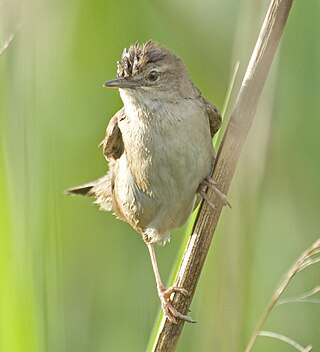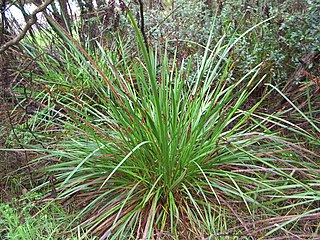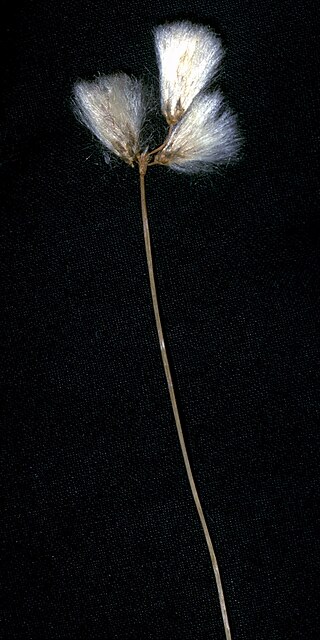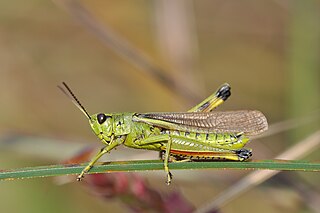
Savi's warbler is a species of Old World warbler in the grass warbler genus Locustella. It breeds in Europe and the western Palearctic. It is migratory, wintering in northern and sub-Saharan Africa.

The sedge warbler is an Old World warbler in the genus Acrocephalus. It is a medium-sized warbler with a brown, streaked back and wings and a distinct pale supercilium. Sedge warblers are migratory, crossing the Sahara to get from their European and Asian breeding grounds to spend winter in Africa. The male's song is composed of random chattering phrases and can include mimicry of other species. The sedge warbler is mostly insectivorous.

The Brazilian gracile opossum is a species of small opossum from Brazil.

The Aceramarca gracile opossum or Bolivian gracile opossum is a species of opossum. It is native to Bolivia and Peru, where it occurs in tropical elfin forest habitat.

Lepidosperma is a genus of flowering plant of the family Cyperaceae. Most of the species are endemic to Australia, with others native to southern China, southeast Asia, New Guinea, New Caledonia and New Zealand.

Eriophorum gracile is a species of flowering plant in the sedge family, Cyperaceae. It is known by the common name slender cottongrass, or slender cottonsedge. Eriophorum gracile is a plant with circumboreal distribution, extending south into mountain ranges of the Northern Hemisphere. It grows in wet areas such as bogs.

The Turnford and Cheshunt Pits is a biological Site of Special Scientific Interest near Cheshunt in Hertfordshire and Essex and covers a total of 428.17 acres. It is part of the Lee Valley Special Protection Area.

Spharagemon collare, the mottled sand grasshopper, is found in sandy-soiled, grassy areas of northern United States and southern Canada. They are known to be a minor pest of wheat crops; however, populations are rarely large enough to cause appreciable damage.
Gracility is slenderness, the condition of being gracile, which means slender. It derives from the Latin adjective gracilis, or gracile (neuter), which in either form means slender, and when transferred for example to discourse takes the sense of "without ornament", "simple" or various similar connotations.

Robust capuchin monkeys are capuchin monkeys in the genus Sapajus. Formerly, all capuchin monkeys were placed in the genus Cebus. Sapajus was erected in 2012 by Jessica Lynch Alfaro et al. to differentiate the robust (tufted) capuchin monkeys from the gracile capuchin monkeys, which remain in Cebus.

Gracile capuchin monkeys are capuchin monkeys in the genus Cebus. At one time all capuchin monkeys were included within the genus Cebus. In 2011, Jessica Lynch Alfaro et al. proposed splitting the genus between the robust capuchin monkeys, such as the tufted capuchin, and the gracile capuchins. The gracile capuchins retain the genus name Cebus, while the robust species have been transferred to Sapajus.

Leptysma marginicollis, the cattail toothpick grasshopper or slender locust, is a species of grasshopper. It has a very pointed head and flattened, sword-shaped antennae. Thus, it superficially resembles grasshoppers in the subfamily Gomphocerinae, but is easily distinguished by the presence of a spur, or spine, between the front legs. They are usually brownish with a white, yellow, or brown stripe from the eye to the base of the front legs. The head is as long as, or longer than, the prothorax. On top, the body may also be red or pink. The front wings are sharply pointed, extending 3-5mm beyond the tip of the abdomen.

Stethophyma is a genus of grasshoppers in the family Acrididae, with species found in Europe, North America and Japan.

The large marsh grasshopper is a species of grasshopper belonging to the family Acrididae.
Boopedon gracile, known generally as the prairie boopie or graceful range grasshopper, is a species of slant-faced grasshopper in the family Acrididae. It is found in Central America and North America.

Tettigidea lateralis, known generally as black-sided pygmy grasshopper, is a species of pygmy grasshopper in the family Tetrigidae. Other common names include the black-sided grouse locust and sedge grouse locust. It is found in the Caribbean Sea, North America, and parts of Central America.

Eyprepocnemis plorans, the lamenting grasshopper, is a species of insect in the family Acrididae. It is the type species of the genus Eyprepocnemis, and is found in Africa, parts of the Middle East, and southern Europe. It typically inhabits wetlands and other moist habitats.

Stethophyma lineatum, the striped sedge grasshopper, is a species of band-winged grasshopper in the family Acrididae. It is found in North America.
















